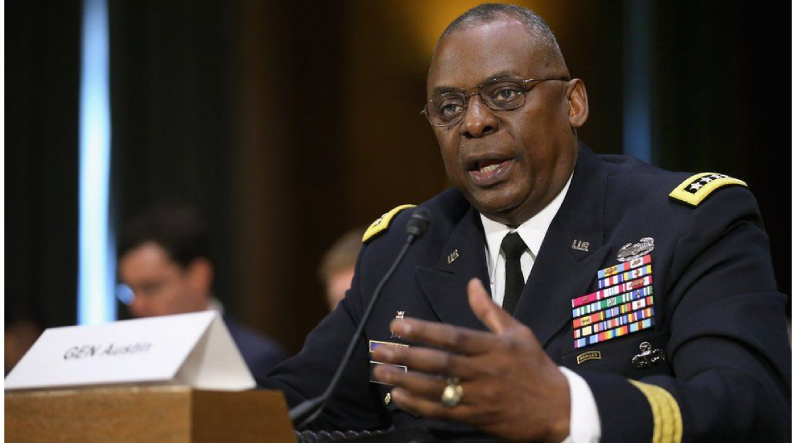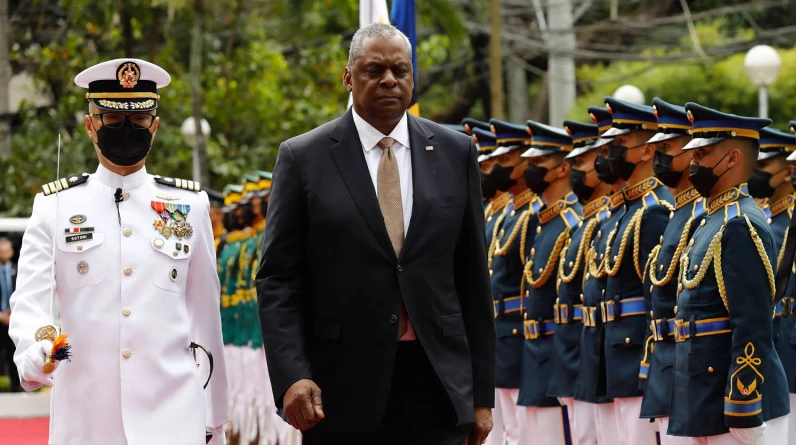SPRING BREAK, Florida (AP) — SUBIC BAY, Philippines Subic Bay in the northern Philippines was once the largest American naval base overseas, but now its once-secret ammunition bunkers and barracks sit empty and overgrown with weeds.
This, however, may soon alter.
More than 30 years after closing its large bases in the Philippines, the United States is taking steps to rebuild its military might in the country and reinforcing an arc of military alliances in Asia in a drastically different post-Cold War era when the perceived new regional threat is an increasingly belligerent China.
U.S.-funded constructions have picked up speed to build barracks, warehouses, and other buildings to accommodate an as-yet-unspecified but expectedly considerable number of visiting troops under a 2014 defence pact, and on February 2nd, the longtime allies announced that rotating batches of American forces would be granted access to four more Philippine military camps in addition to the five other local bases.
The location of the Philippine camps, according to Andrea Chloe Wong, a political scientist based in Manila, would provide the United States with the presence it would need to be a “strong deterrent against Chinese aggression” in the South China Sea, where China, the Philippines, and four other governments have had increasingly tense territorial rifts, as well as a possible Chinese invasion of Taiwan, which Beijing views as its own territory to be brought under Chinese control, by force if necessary.
The news of the Philippine government’s decision to allow an expanded American military presence revived memories of a time when thousands of U.S. sailors pumped money, life, and hope into the neighbouring city of Olongapo, located near the former U.S. Navy base in Subic, which is now a bustling commercial freeport and tourism destination northwest of Manila.
In an interview at his foreign exchange and music store on what was once Olongapo’s garish red-light strip, Filipino businessman AJ Saliba reminisced about the days when Olongapo was “like Las Vegas.”
It’s noisy at noon because the neon signs are lit and the Americans are out and about. There were ladies in every corner. Everyone made money off of them: jeepney drivers, tricycle drivers, restaurant owners, barkeeps, hotel owners. “If they come back, my God, you know, that’ll be the best news,” he said.

As part of his trip to Manila last week, U.S. Defense Secretary Lloyd Austin emphasised that the United States is not seeking to reestablish permanent bases, but that the Enhanced Defense Cooperation Agreement’s expansion of the American military’s presence in the country is “a big deal.”
Austin and his Philippine counterpart Carlito Galvez Jr. agreed that visiting American military personnel could engage the Philippine military in larger joint combat-readiness trainings, help in responding quickly to disasters, and press efforts to help modernise Manila’s armed forces.
The People’s Republic of China continues to advance its illegitimate claims in the West Philippine Sea, so this is part of our effort to modernise our alliance, Austin said at a news conference in Manila.
Chinese Foreign Ministry spokesman Mao Ning warned that increased U.S. military presence in the region would increase tensions and threaten regional stability.
Reporters gathered in Beijing on February 2 to hear Mao’s remarks, in which he stressed the importance of vigilance and warned against the United States’ attempts to use or coerce regional countries.
When asked about the four additional sites to which the Americans would be granted access and permission to preposition weapons and other equipment, Austin and Galvez remained tight-lipped. When asked about whether or not the Americans needed permission to stay in a certain area, the Philippine defence chief said that they should consult with local officials.
Lt. Gen. Bartolome Bacarro, then chief of staff of the Armed Forces of the Philippines, revealed in November that one of the locations was the strategically important bay of Subic, where the Navy base had previously been a boon to the local economy. Subic, where a Philippine navy camp is located, is not on the current list of sites where Washington has sought access for its forces, according to two senior Philippine officials who spoke to the AP. However, they hinted that this might change as talks continued. Since they were not authorised to speak publicly on the matter, the two officials spoke on the condition of anonymity.
The head of the freeport in Subic, Philippines, Rolen Paulino, claims that he has not been informed by the government that the former U.S. naval base has been designated as a potential site for visiting U.S. forces.
Many Filipinos and businesses are still trying to recover from the two-year COVID-19 lockdowns and economic recession caused by coronavirus outbreaks, but a renewed U.S. military presence at Subic would generate more jobs and raise additional freeport revenues, Paulino said.
He described the American troops who could help the economy as “tourists.”
The former American Navy base at Subic, which is about the size of Singapore, had been used to support the U.S. war effort in Vietnam in the 1960s and 1970s because of its deep harbours, ship repair yard, and enormous warehouses. As a result of the Philippine Senate’s refusal to approve a lease extension for the United States in 1992, the base was closed and converted into a commercial freeport and recreational complex.
Nearby Mount Pinatubo roared back to life in the second-largest volcanic eruption of the 20th century, belching ash on Clark Air Base and the surrounding areas, prompting the United States Air Force to withdraw the previous year.
After more than three centuries of Spanish colonial rule over the Southeast Asian nation of the Philippines, the U.S. seized the archipelago in 1898, ushering in a new colonial era. In November 1992, the American flag was lowered for the final time and the last group of American sailors left Subic. Even after Washington recognised the Philippines’ independence on July 4, 1946, it continued to maintain military facilities, including at Subic.
China’s seizure of Mischief Reef in the mid-1990s, a coral outcrop within the Philippines’ exclusive economic zone that extends into the South China Sea, “provided the first hint that the allies may have been too quick to downgrade their relationship,” said Greg Poling, director of the Asia Maritime Transparency Initiative at the Center for Strategic and International Studies in Washington, D.C.
Security agreements such as the 2014 Enhanced Defense Cooperation Agreement and the 1998 Visiting Forces Agreement allow for temporary visits by foreign troops despite the Philippine Constitution’s ban on the permanent basing of foreign troops in the country and their involvement in local combat.
The Abu Sayyaf group, at the time linked to al Qaida, was responsible for deadly bombings and mass kidnappings for ransom, including three Americans; one was beheaded and another was shot and killed in a Philippine army rescue, but the 1998 agreement allowed for a large number of American forces to be deployed in the southern Philippines to help provide combat training and intelligence to Filipino forces battling the group. All but the third one perished.
However, Wong said that the killing of a Filipina transgender woman by a U.S. Marine in 2014 has bolstered domestic opposition to U.S. presence in the Philippines, which has been criticised by left-wing groups as neo-colonialism.
Northern Cagayan province governor Manuel Mamba has vowed to oppose any American military presence in the area, where Bacarro claims the United States has sought access for its forces in two local military encampments. Cagayan is a province in the Philippines that sits on the northernmost tip of the island of Luzon, directly across the Taiwan Strait from southern China.
It’s going to be a really bad idea for us. Mamba told the Associated Press over the phone, “If they stay here, whoever is their enemy will become our enemy,” adding that the Philippines could be targeted by nuclear weapons if the conflict over Taiwan escalates.
Since the Americans will be present, “you cannot really remove any presumption by anyone that the Philippines has a nuclear capability through them,” Mamba said.

